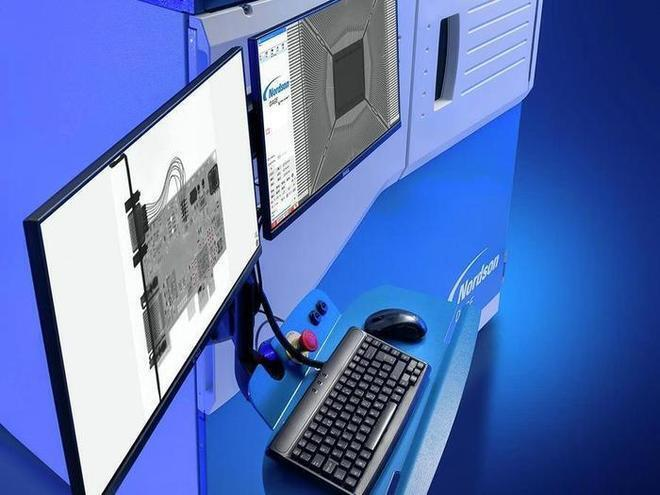X-RAY detection of solder voids in BGA packaging
Release time:2024-07-10Publisher:Jeenoce
With the continuous development of technology, the volume of electronic products is gradually shrinking, but the performance is constantly improving. Among them, BGA packaging technology has played an important role. However, the problem of voids during BGA packaging and welding has always been a key factor affecting product quality and reliability. In order to solve this problem, X-RAY detection technology has emerged as an important tool for detecting solder voids in BGA packaging.
Firstly, we need to understand the causes of solder voids in BGA packaging. During the welding process, bubbles generated by the cracking of organic compounds in the flux, as well as temperature changes and physical pressure during the welding process, may cause gas to be trapped in the alloy powder, forming voids. These voids not only affect the connection quality of the welding points, but may also cause module dysfunction and even damage during normal operation. Therefore, the detection of solder voids in BGA packaging is crucial.

X-RAY detection technology, as a non-destructive detection method, has the advantages of high efficiency, high accuracy, and easy operation. In BGA packaging welding cavity detection, X-RAY detection equipment can penetrate the interior of the package, directly observe the solder joint structure, and thus discover potential cavity problems. Compared with traditional destructive testing methods, X-RAY testing not only avoids product damage, but also achieves automated testing on the production line, improving production efficiency.
During the X-ray detection process, the X-ray emitted by the equipment can penetrate the structure of the solder joint, capture the reflected radiation information, and generate a three-dimensional image of the interior of the solder joint. These images can clearly display the voids inside the solder joint, including their size, location, and distribution. By comparing and analyzing these images, the severity of solder joint voids can be determined, and corresponding measures can be taken for repair or improvement.
In addition, X-RAY detection technology can also be used to detect other defects during BGA packaging welding process, such as breakage, short circuit, solder leakage, and virtual soldering. These defects can also have a serious impact on the quality and reliability of the product. Through X-RAY testing, these potential issues can be identified in a timely manner to ensure product quality and reliability.
In addition to BGA packaging and welding cavity detection, X-RAY detection technology can also be applied to packaging detection in other fields. For example, in nanoscale packaging testing, X-RAY detection equipment can capture smaller defects and changes, providing more accurate data support for product design and manufacturing.
However, although X-RAY detection technology has played an important role in detecting voids in BGA packaging welding, its application also faces some challenges and limitations. For example, for large or complex packaging structures, the penetration ability of X-RAY detection equipment may be limited, resulting in the inability to fully capture internal voids and defects. In addition, the use and maintenance of X-RAY testing equipment also require certain professional knowledge and skills to ensure its accuracy and reliability.
To overcome these challenges and limitations, we can take some measures. Firstly, for large or complex packaging structures, we can use higher power X-ray detection equipment or combine other detection technologies such as ultrasonic testing for comprehensive testing. Secondly, for the use and maintenance of equipment, we need to strengthen professional training and skill enhancement to ensure that operators can proficiently master the usage methods and precautions of the equipment.
In summary, X-RAY detection technology plays an important role in detecting voids in BGA packaging welding. Through X-RAY testing, we can promptly identify and solve cavity problems during the welding process, improving product quality and reliability. At the same time, we also need to constantly overcome technological challenges and limitations, and promote the continuous development and improvement of X-RAY detection technology. I believe that in the future, with the advancement of technology and the expansion of application fields, X-RAY detection technology will play an important role in more fields, bringing more convenience and value to people's lives and work.

